TRACING THE PATH PODCAST

1882: Do Not Enter These United States
This episode, framed by the mythological struggle of Sisyphus, recounts the arduous journey and persistent resilience of Chinese immigrants in the face of immense adversity. It begins with the Taiping Rebellion in China, detailing the rise of General Zuo Zongtang and the devastating consequences of the war, which led to a mass exodus of Chinese laborers.
These laborers, seeking opportunity and often fleeing economic hardship, traveled globally, including to the United States during the California Gold Rush, where they faced widespread discrimination, unfair taxes, and legal subjugation, exemplified by the Chinese Exclusion Act. Despite these challenges, Chinese immigrants demonstrated remarkable ingenuity and perseverance, contributing significantly to American infrastructure, culture, and legal precedent, as seen in the construction of the transcontinental railroad, the development of the Bing cherry and Valencia orange, and landmark Supreme Court cases like Yick Wo v. Hopkins and United States v. Wong Kim Ark, ultimately challenging and shaping the very definition of American liberty and citizenship.

Audio Hour:
If you run an activity group, classroom or “audio book club”, click here for more information on using Tracing The Path.
Throughout the episodes, every tune is somehow related to the topic. In the Twinkies episode, for instance, the discussion of the Brooklyn Tip-Tops Baseball team concludes with “Take Me Out To the Ballgame”.
How many do you recognize? And harder, how many can you name?
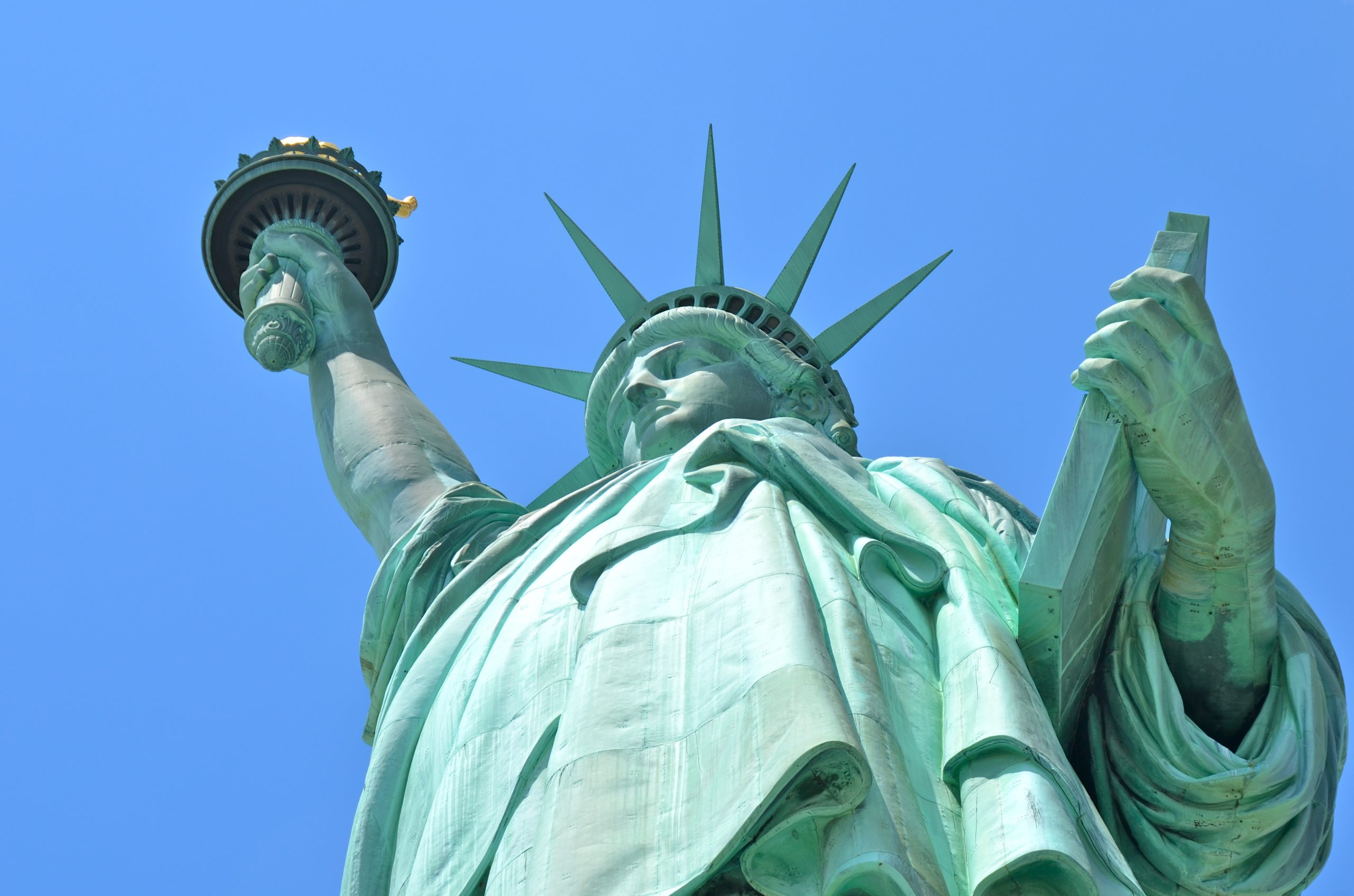
Zuo Zongtang
‘There is a Greek myth about a man named Sisyphus who was punished by Zeus and was ordered to push a boulder up a hill over and over for eternity. In today’s story, our hero is punished in every way possible. But still, for 61 years, he picks up that boulder and keeps rolling it up the hill with the hope that one day things would change.
Our story begins in 1850 with China on the brink of a civil war. But this would not be like any other civil war. Even though it happened a a few years before the American Civil War. It is sometimes referred to as the Taiping Revolution, but it was more of a civil war than a rebellion, matching the Manchu led Qing dynasty against the Haka, a group that descended from the Hans.
And unlike most civil wars where one intends to overthrow the other, the Taiping merely wanted to radically reform it.
Life in China under the Qing dynasty had experienced a series of famines, natural disasters, and economic problems. Farmers were over taxed and the opium trade had affected the trade balance.
The Taiping were a faith-based group interested in Christianity, yheir leader being a self-described brother of Jesus Christ.
In 1953, the Taiping had their first major victory, overtaking the city of Nanjing, forcing the Qing to double their efforts. The battle was largely fought in south and central China, largely affecting the province of Hunan.
There a self-taught political scientist named Zuo Zongtang would rise to fame. He was initially hired to be the adviser to the governor, but his true skills shone through. With his understanding of the political environment, the needs of the Chinese people, and the needs of the overall economy, he rose to power.
His innovative ideas landing him as the commander of a 5,000 soldier volunteer army to which he drove the Taiping out of Hunan all the way back to Guandong, by the coast, and then in 1863 he was made Under Secretary of War and in 18 months completely dethroned the Taiping ending the war.
In 1865 he saw China in a weakened state and created the first modern shipyard and naval academy.
A great deal of damage had been done to the country.
He believed the only way to prosperity was through an educated citizenry. He advocated agricultural reform, removed the poppy and opium farms and replaced them with cotton. This spurned a new textile industry which created thousands of socially acceptable jobs for women.
And he opened a printing press to print pamphlets of Chinese philosophy for the people. Zuo Zongtang has since become a national hero and always a hero for an end. But the war he helped finished was devastating. It is still considered the bloodiest civil war ever, the bloodiest battle of the 19th century, and some put it on the list of the worst battles of all.
It affected 30 million people in China, forcing them all to relocate or leave China altogether. The mass exodus of Chinese laborers created a new industry almost overnight. As the world was battling its position on slavery, a Chinese population willing to work for very low pay was seen as the answer for many.
Chinese laborers were brought into South Asia and Korean markets to work on sugar plantations. The British brought labor to its colonies everywhere. But the unscrupulous treated the Chinese as slaves, and word soon went out that Chinese laborer slaves were available for trade.
When Britain got word of the mistreatment and slavery in Peru and Cuba, they closed the ports immediately.
Many of the Chinese laborers were poor, they didn’t have money for this kind of a trip. So, they were forced to offer their houses as collateral. Others agreed to become indentured servants and many signed contract labor agreements.
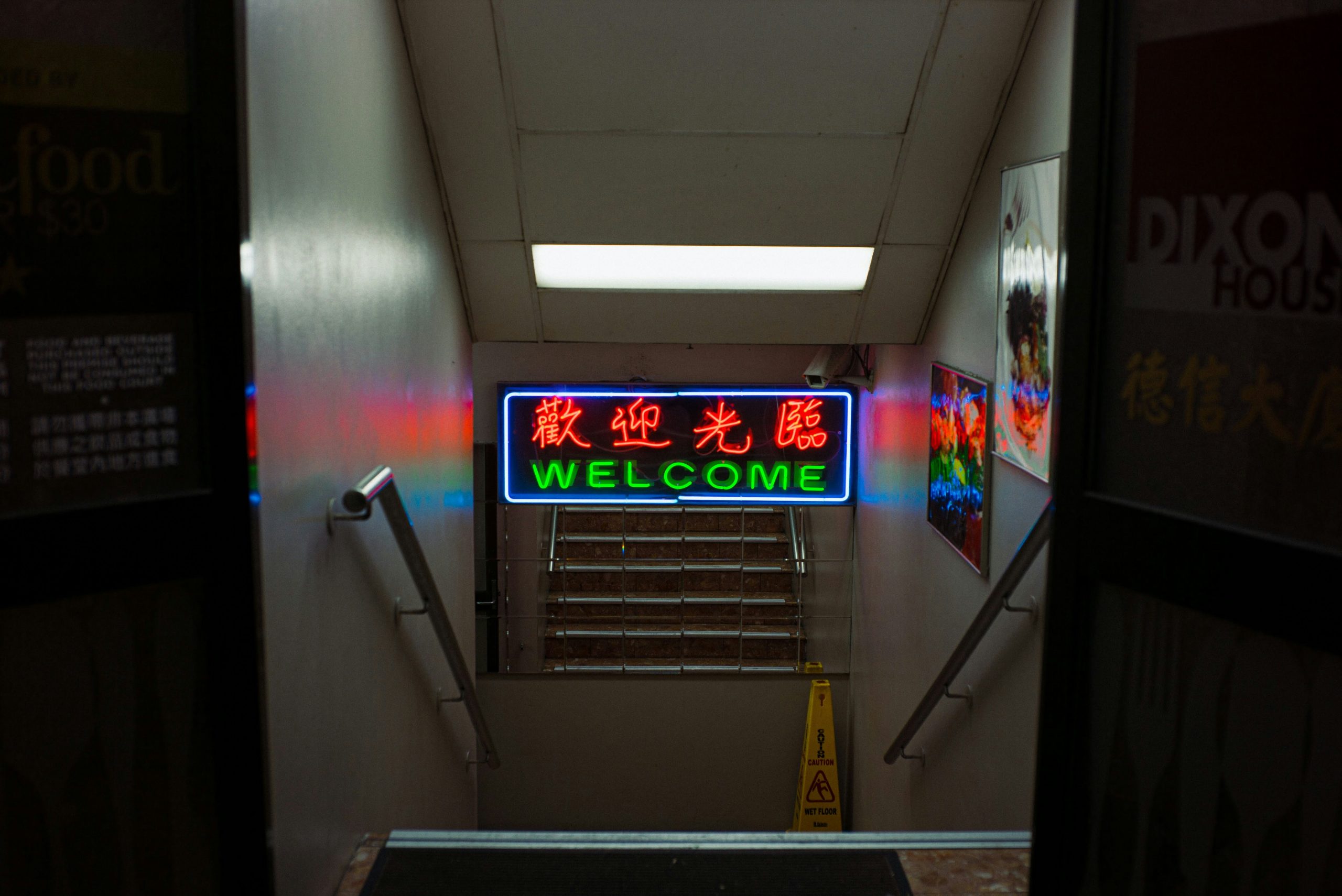
The Chinese Come to America
It was 1847 when the first ship carrying laborers arrived in the United States.
But rumors of a gold rush in 1848 accelerated that immigration a thousandfold.
By 1849, 20,000 Chinese had arrived in California, looking for gold. In 1848, San Francisco had been a town of 800 people, but only 2 years later, it was a city of 25,000.
80% of the gold rush miners were Americans from out east, all having had made great sacrifices to be there. At the time, there were no highways or railroads, and leaving for California meant no connection to family or loved ones either.
And the gold was there, but much harder to get than rumors led on. Most only found gold dust and smaller pieces, part of which they owed to the landowner of the mine.
The presence of the Chinese made finding gold even harder, as fewer places were available for any particular miner. And since the Chinese had to send payments back to China or fear losing their homes, for instance, they were willing to work for much less money.
For Central Pacific Railroad, lower wage laborers was an answer to prayer. With a growing population out west, the US government had already extended money for homesteading, money for roads, and gave money to railroad companies to build a transcontinental railway.
Central Pacific went to San Francisco to hire the low wage Chinese workers to help build the railroad. And in most cases, they were eager because California was quickly becoming a hostile place to live.
Since the Chinese helped lower the wages and took the railroad jobs, an anti-Chinese sentiment was starting to build.
California politicians responded to the situation first by levying a $20 a month miners tax on any foreigners who came to mine gold. With Gold already hard to find, the Central Pacific Railway Offer was a good one.
Over 10,000 Chinese laborers helped build that railway. Because they needed money and culturally were very hard workers, they exceeded every expectation the railroad put on them.
Desert heat, freezing winter, mountains, tunnels, bridges, all got built with efficiency. In fact, Central Pacific Railroad finished 7 years before the government deadline.
Life in California for the Chinese, however, did not improve. In fact, it it got worse.
In 1854, in an expansion of America’s racist past, the California Supreme Court ruled that like the black man, a person of Chinese descent, was inferior to whites and therefore couldn’t be used as a witness in court.
That ruling made it virtually impossible to be persecuted for crimes against the Chinese.
And then in 1863, President Abraham Lincoln got involved deep into his campaign to free the slaves in the US South. He signed a law banning the importation of Chinese citizen slaves and banned Americans from doing business with Chinese laborers, all in the name of ending the brutal Chinese slave trade.
Nevertheless, its implications to the Chinese already in America was severe. Many found it even harder to find work and were forced to leave California in search of the few jobs available.
Some realized that opening their own business was the employment answer. So, they began opening restaurants and shoe repair shops. Urban areas and Chinatowns began to grow where the Chinese people could live and work near other Chinese people.
They even formed their own associations and clubs to help one another. Laborers who didn’t have the where withal to start their own business could find labor jobs, but often far away. A rumor of gold in Deadwood, South Dakota, moved a large population there.
Others sought jobs in nearby states like Washington and Oregon.

The Origin of Bing Cherries
Ah Bing, a Chinese immigrant from the Manchurian part of China, moved to Oregon where he found work as a foreman of a large farm owned by Seth Llewellyn.
He brought gardening knowledge from China but also learned quickly about grafting and cross-pollination.
In 1875, Seth and Ah crossed the Black Republican cherry plant with the Royal Anne to create a new line of cherry. It was much better suited for the dry summers of Oregon and had a deeper, tarter taste. They named the cherry after Ah as the Bing cherry.
Back in San Francisco in 1880, the city enacted another law designed to discriminate against Chinese immigrants. They passed an ordinance that required allies to hold a permit issued by the board of supervisors.
And although people of Chinese descent owned 90% of the restaurants, none of them were issued a permit.
For laundry owner Yik Wo, this was his livelihood. So he kept operating without a permit, but was soon imprisoned by the sheriff. Yik sued the city, claiming his rights were violated under the equal protection clause, the 14th amendment and the case went all the way to the US Supreme Court.
And the Supreme Court ruled in favor of Yik Wo enforcing the 14th amendment that laws could not be applied unequally. The Yik Wo case became the basis for the 1960 Brown versus Board of Education case during the civil rights movement.
Chinese Exclusion Act
On the other side of the world, Édouard René de Laboulaye had been watching the anti-slavery movement in the US. He ran the anti-slavery society in France and needed Abraham Lincoln to come through as a shining example for the world.
In 1863, just after Lincoln passed the law banning the Chinese slave trade, he signed into law the Emancipation Proclamation freeing the slaves on paper in the United States.
Laboulaye felt France should send a gift to the United States to commemorate this accomplishment and suggested a giant statue honoring liberty would be perfect. And he suggested be received and unveiled in 1876 for the 100th year anniversary of the United States.
Unfortunately, the Franco Prussian War would hinder that timeline significantly. The French team working on the gift came to the conclusion that a woman holding a torch could be the monument.
The US already featured the likeness of Colombia, a woman holding a torch on its money as a symbol of freedom. To meet this centennial deadline, however, it was going to involve a lot of work very quickly.
They would only be able to produce a small piece of the monument. And so the artist Bartholdi crafted the head and the torch arm and sent them to America for the centennial celebration. They arrived in 1876 and were on display in Philadelphia and New York for 6 years, until 1882.
Prior to that, Bartholdi had visited the United States and fell in love with Bedloe Island as the place for the monument as it would be seen by all the immigrants coming into New York Harbor.
So in 1882, the head and the arm were sent back to France for final construction of the monument. Meanwhile, the United States was responsible for raising the money and building the pedestal that it would stand on.
On that effort was led by a group in New York City calling themselves the America Committee. They didn’t have a lot of luck raising money until they asked Joseph Pulitzer if he would help.
Shortly thereafter, they had raised all the money they needed.
Incidentally, on the America Committee was a 19-year-old named Teddy Roosevelt.
Finally, in 1886, President Grover Cleveland would preside on a yacht for the unveiling and dedicating ceremony of the new Statue of Liberty on Bedloe Island. But not without controversy, and rightly so.
Back in 1882, when the head and arm were sent back to France for final construction, President Chester A. Arthur had something else on his mind besides the Statue of Liberty. He would sign into law the Chinese Exclusion Act banning all Chinese immigrants with a few exceptions from coming to America.
Imagine this.
The president of the United States with the right hand building a monument to honor immigrants and the left hand signing a law to ban one.
In 1884, the New York Sun had featured a letter from a New York attorney, New York resident and Chinese immigrant – Sambo. He had just received the letter from the America Committee asking for donations to build the Statue of Liberty pedestal.
His letter to the Sun reads,
“A paper was presented to me yesterday for inspection, and I found it to be specially drawn up for subscription among my countrymen toward the pedestal fund of the Bartholdi Statue of Liberty. Seeing that the heading is an appeal to American citizens to their love of country and liberty, I feel that my countrymen and myself are honored in being thus appealed to as citizens in the cause of liberty.
But the word liberty makes me think of the fact that this country is the land of liberty for men of all nations except the Chinese.
I consider it an insult to us Chinese to call on us to contribute toward building this pedestal for a Statue of Liberty. We Chinese do love and adore thee, but let not those who deny thee to us make of thee a graven image and invite us to bow down to it. – Sambo”
Despite all that was put in front of the Chinese immigrants, they were still determined to prosper and would continue pushing that boulder up the hill, making changes along the way.
Since immigration was now limited for the Chinese, being that only merchants and family of merchants could enter, a new industry popped up, Paper Families.
Chinese immigrants could buy paperwork that said they were sons or daughters of merchants. And if they could successfully answer all the questions at the border, they might be able to make it through to America.
One of those who had to use the paper system was Lou Gim Gong.
Origin of the Valencia Orange
Lou was only 15 years old when the Chinese Exclusion Act was put in place. He’d come to America with his uncle in search of gold, but found himself working in a shoe factory in San Francisco instead.
In 1874, he was approached by a shoe factory owner in Boston through 3,000 miles away.
The owner’s employees had gone on strike, and he needed experienced shoe workers to come to Boston to work on the factory and break the strike. He was one of 75 Chinese workers to say yes.
And it was in Boston where he started attending church and learning English. He also met Fannie Burlingame, who he became fast friends with and went to live with her as the gardener of her estate.
Fannie, coincidentally, was the cousin of Anson Berlingame who had been the first US ambassador to China. It was Anson who first opened the door to trade and immigration with China.
In the 1880s, Lou got sick and went back home to China. But life was too difficult there, so he boarded the boat and returned back to the United States. However, since he left, the Chinese Exclusion Act had taken place, which meant Fannie Burlingame had to forge papers herself, insisting that he was a merchant, opening a store in Massachusetts.
The Burlingames also owned land in Deland, Florida, which is where Lou eventually moved and lived.
During his first year there, the winter had been so harsh it had killed their orange trees. With the training he’d gotten from his family in China, Lou set out to make a sweet orange that was also frost resistant.
He began to graft oranges until he developed the perfect fruit. The orange was quickly named after him, the Lou Gimong orange.
But because it sounded a little bit more exciting for marketing companies, today you know that orange as the Valencia Orange.
In a similar story in 1898, It was a Chinese immigrant who put citizenship and the US Constitution on trial.
Wong Kim a]Ark was the son of Chinese immigrants and had been born in the United States. Upon returning back to the US after a short trip home to China, Wong Kim Ark was faced with the Chinese Exclusion Act.
He was denied entry and sent to Angel Island to await his paperwork.
In the meantime, he filed suit against the government. In the case, went to District Court in Northern California and to the California Supreme Court before landing in the hands of the United States Supreme Court.
This time the case was about the citizenship clause of that same 14th amendment. The question asked was whether you were truly a US citizen if you were born on US soil to non-citizen parents.
The case had never been tested and in a 6-2 decision the court found for Wong Kim Ark and every future baby born on American soil. The Wong Kim Ark case is still being battled today as politicians are faced with an anchor baby pandemic in the United States South.
Origin of General Tso Chicken
Since the exclusion act barred the Chinese from working, many were forced to open their own restaurants. To make the food more inviting to the Western pallet, they largely modified their recipes.
One of of those became a runaway hit that every Chinese restaurant would advertise. It was a simple mixture of noodles, meat, and vegetables called Chop Suey. Two small changes assisted immigration after that.
The first was the 1906 San Francisco earthquake, which destroyed a great many buildings and birth records. It actually gave immigrants a chance to claim citizenship knowing that there were no birth records to line.
And then in 1915, a federal law was clarified in court.
From an immigration standpoint, merchants were allowed to come to the United States, but the new case indicated that restaurant owners were technically merchants and were entitled to bring employees into America as well.
That created a Chinese restaurant boom in the United States.
The different Chinese cultural Associations would help find small towns where a competing restaurant didn’t exist until basically all of America was replete with Chinese restaurants. In fact, today Chinese restaurants outnumber McDonald’s, Wendy’s, and Burger King combined.
The Chinese Exclusion Act would not be repealed for 61 years, not until World War II in 1943.
The US needed better relations with China and a bigger labor force. So, it was repealed. But it wouldn’t be until 1972 that an American president would visit China. Richard Nixon made the trip.
President Nixon’s trip would change the perception of the Chinese and Chinese food forever. During his trip, Nixon was invited to a state dinner in the Hunan Province, and the media took pictures of that night’s menu.
Chinese restaurants everywhere jumped at the chance to introduce Hunan food and to offer President Nixon’s meal options. People flocked to Chinese restaurants to try it. Michael Tong of Shunley Palace in New York City decided to offer a new dish.
He’d experienced the dish at Chef Pang’s Hunan restaurant in Taiwan years prior, but he had his own take on it. It was a sweet and spicy deep fried chicken dish that he decided should be named after the famous Hunanese statesman who’d helped quell the Taiping Revolution and stopped the war.
That man was Zuo Zongtang. But since his victory with the 5,000 strong army, he had always been known as General Zo.
Thus, Michael Tong named it General Zo’s Chicken.
As part of a news segment, the eyewitness gourmet came to Michael Tong’s restaurant and talked to him about this new Chinese dish. And afterwards, over a thousand requests came in for the General Zo recipe.
That was 1973.
That brings us to our final tale.
After the assassination of Tsar Alexander II in 1881, Russian Jews fled the country. Many immigrated to New York just in time to see the head and torch of the Statue of Liberty before it was returned to France.
The poet and humanitarian Emma Lazarus stepped up to help these new immigrants by establishing the Hebrew Technical Institute, which would provide vocational training. She also wrote a poem as a way to show empathy for the refugees.
And she offered the poem to the Statue of Liberty pedestal fund to be put into a silent auction.
Its most famous line reads,
“Give me your tired, your poor, your huddled masses yearning to breathe free, the wretched refues of your teeming shore. Send these the homeless tempest toss to me. I lift my lamp beside the golden door.”
Despite the statue and poem, for 61 years, the Golden Door was closed to our Chinese friends and neighbors.
It was only because of World War II that Franklin Delano Roosevelt signed the Magnus Act, rescending the Chinese Exclusion Act, giving the Chinese a chance to come to America again.
He signed this Magnes Act exactly 666 days after he signed Executive Order 90066, which put all people of Japanese descent, including US citizens, into isolated incarceration camps until 1943 as a response to Pearl Harbor.
Welcome to the land of the sometimes free and home of the incredibly brave.
CUTTING ROOM FLOOR
To hear all the stories that hit the cutting room floor, you have to listen to the episode.
ABOUT THE SHOW
Let us tell you the story of the 20th Century, by tracing each event back to the original decisions that shaped it. You’ll quickly find out that everybody and everything is connected. If you thought you understood the 20th Century, you’re in for a treat.
Tracing the Path is inspired by storytellers like Paul Harvey, Charles Kuralt, and Andy Rooney.
INTERCONNECTED EPISODES
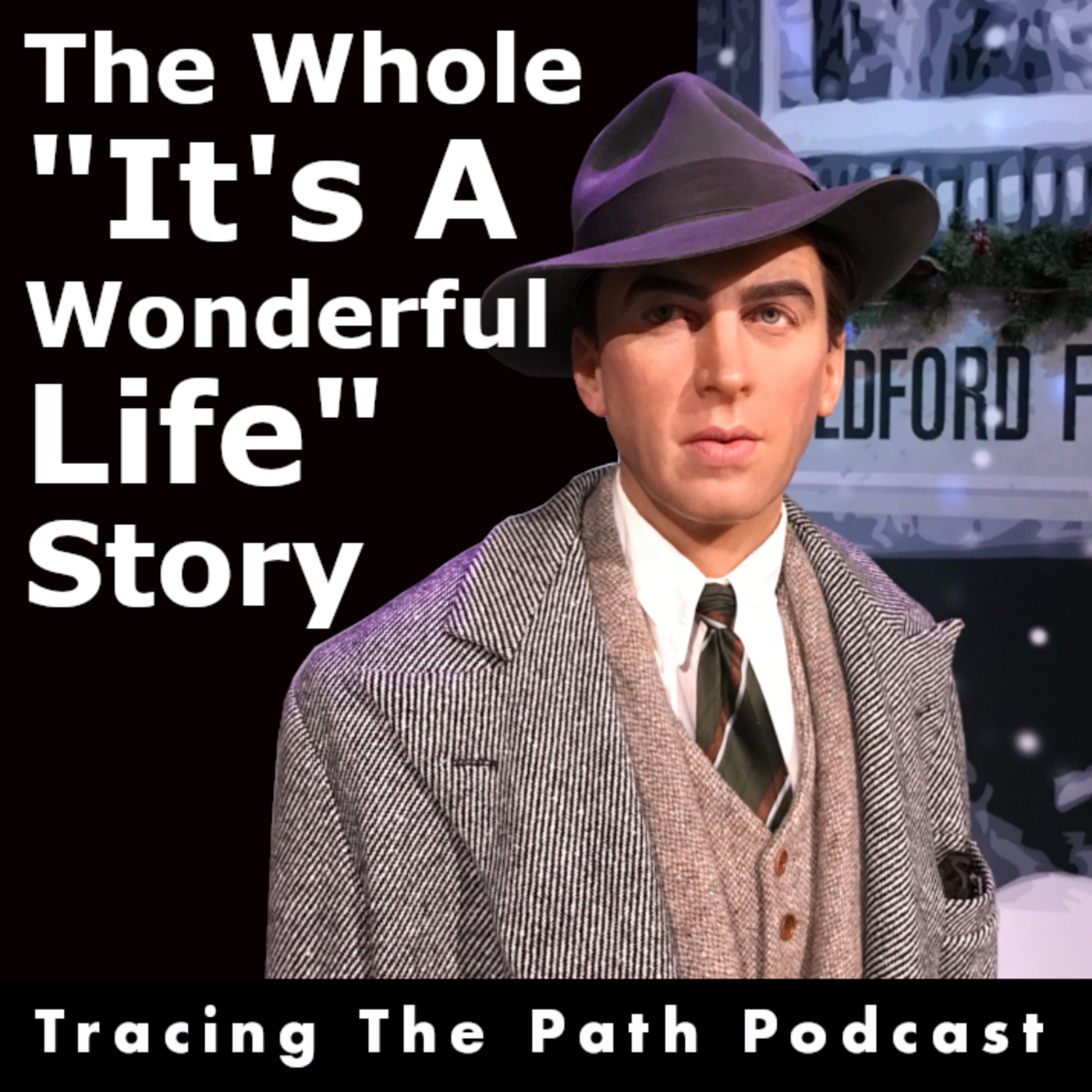 |
The Whole It’s A Wonderful Life Movie Story This is a true story with a huge twist, that’s a little bit like Winnie the Pooh. |
 |
The Blue Jeans that Got Away With Murder Follow the color blue from ancient founding to the murder of millions. |
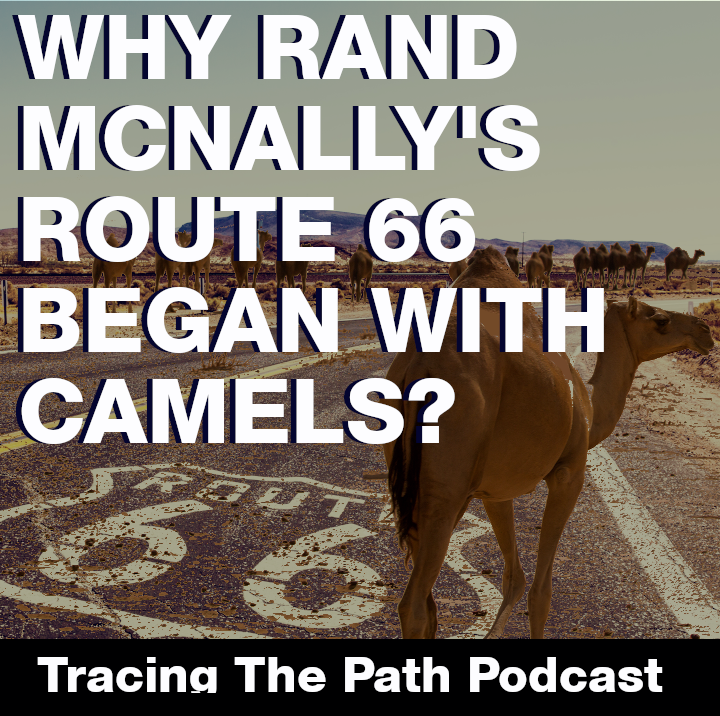 |
Why Rand McNally’s Route 66 Started with Camels You’ve heard the story about Roman Wagon Ruts, right? That’s not this. |
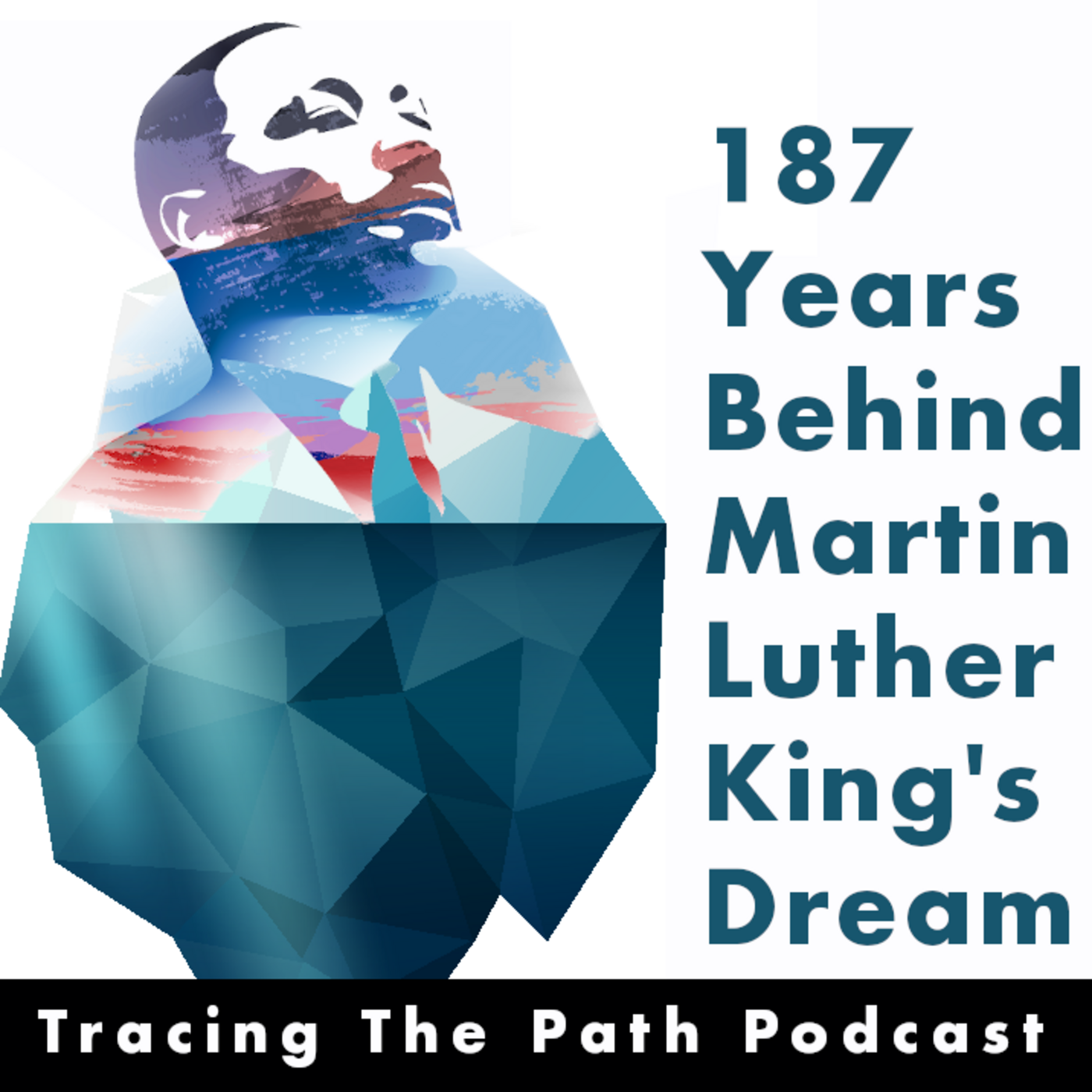 |
187 Years Behind Martin Luther Kind’s Dream We all learn about the “I Have a Dream” speech, but few know where it comes from. |
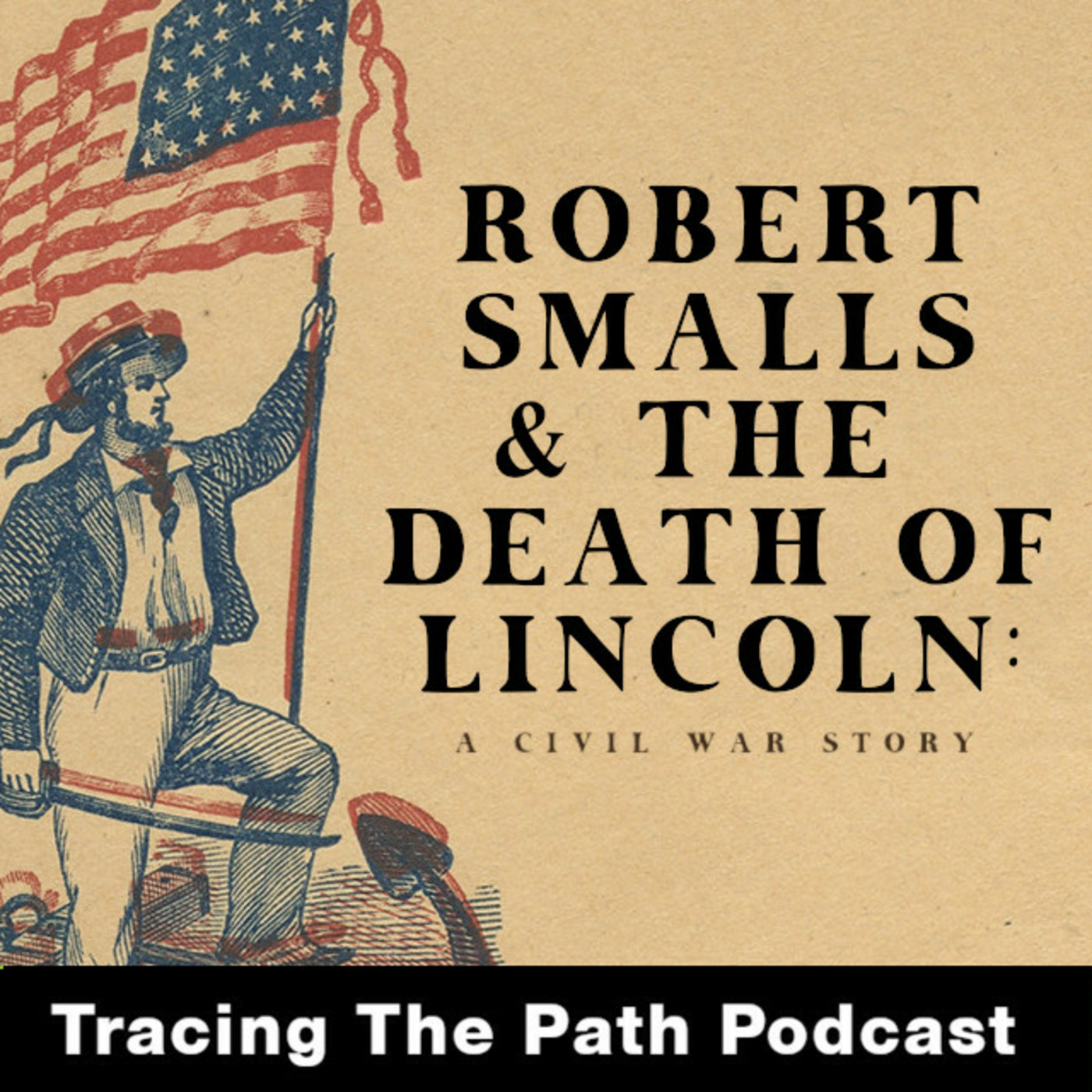 |
Robert Smalls and the Death of Lincoln If Lincoln was with Robert Smalls, he wouldn’t have been assassinated. |
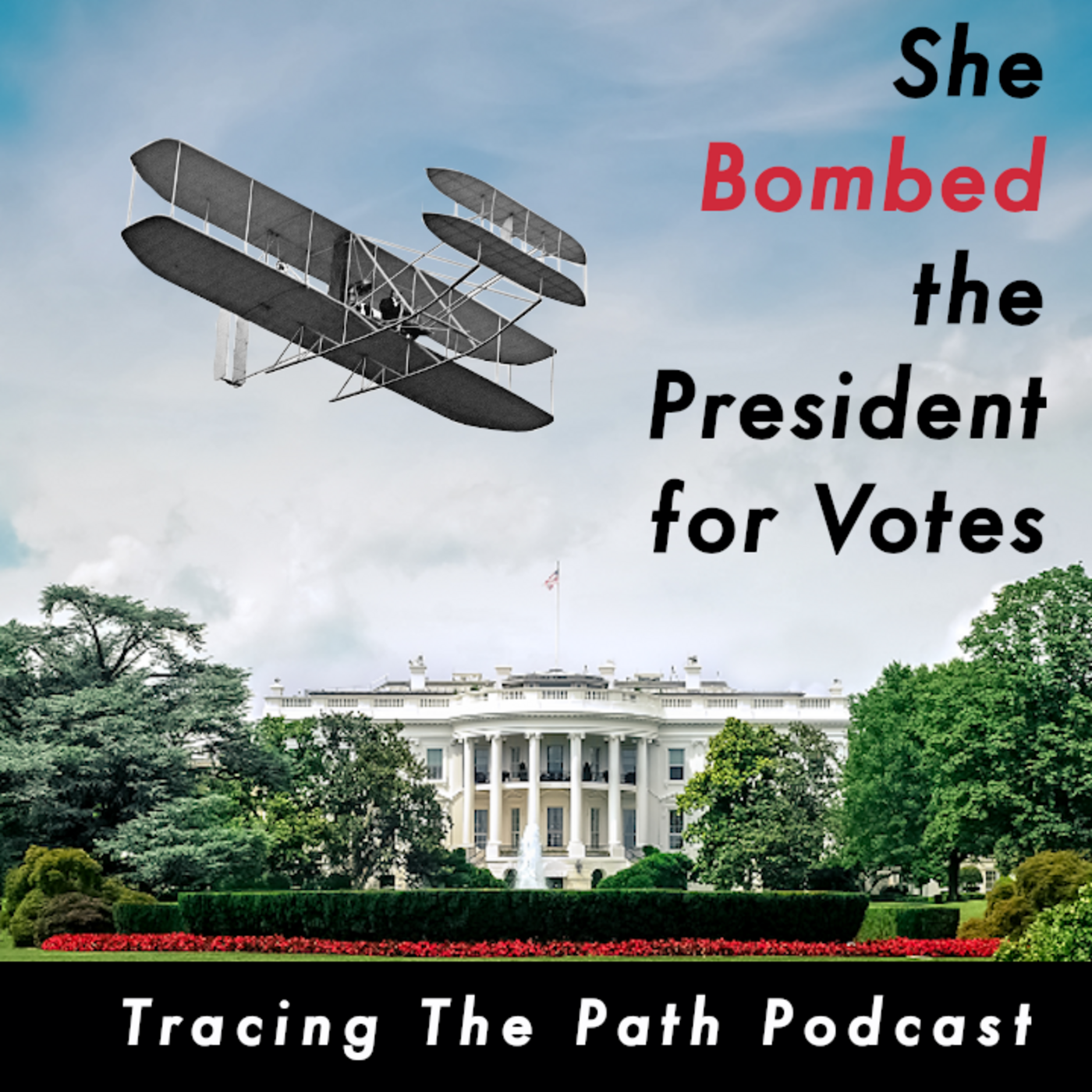 |
She Bombed the President for Votes Women, who were given freedom by the Constitution spent 200 years fighting to use it. |
SEE THE BIBLIOGRAPHY
SUBSCRIBE AND LISTEN (FOR FREE!)
RATINGS & REVIEWS
If you enjoy this podcast, please give it a rating and review.Positive ratings and reviews help bring Tracing The Path to the attention of other history lovers who may not be aware of our show.



